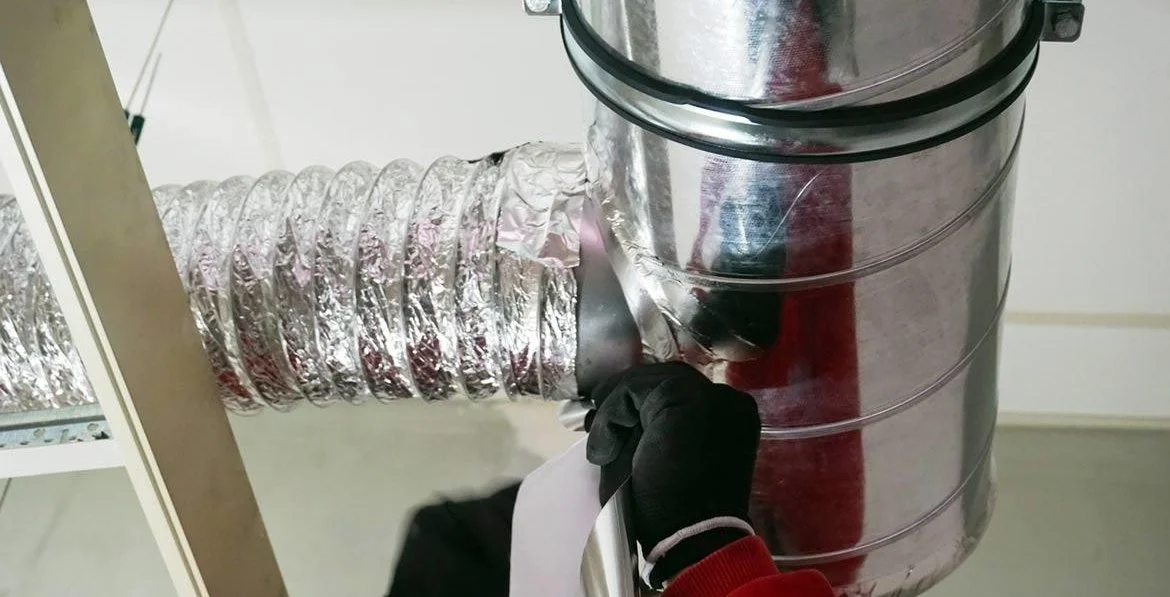How to Plan Heating and Cooling for a Renovation vs. New Construction
How to Plan Heating and Cooling for a Renovation vs. a New Construction
Working with us to design your renovation or new home involves a lot of important decisions (but also a lot of fun). Our commitment to being thorough and hands-on to create your perfect living space means that we’re going to be asking you questions about everything. That includes your heating and cooling system.
It’s not the most glamourous part of design, but it is important. Your home heating and cooling system is what keeps you comfortable everyday in every season, especially our Calgary winters. Now is a perfect time to look at making some changes/decisions that could not only increase energy efficiency, but save you money on your energy bills.
These are some things we’ll talk about in the design stage, with different options for a renovation vs. a new construction.
1. DUCTWORK:
Ductwork is the backbone of your home heating and cooling. There are different ways to approach it in a renovation vs. a new construction.
For Renovations
Your ductwork is pretty permanent once it’s put in place, because changing it would require you to tear the walls down. And that’s no small job. So if you’ve found that your ductwork leaves hot and cold spots in your home, a renovation is a good time to reevaluate the layout.
If you’re tearing everything down to the studs, talk to your contractor and a licensed technician about making alterations to improve your heating. This will increase efficiency, and reduce the hot and cold spots you’re experiencing. If you’re doing a minor renovation that doesn’t involve a lot of demolition, your ductwork will be staying as is.
What if I added a new vent? You may think that adding a new vent would do the trick because it’s much simpler than adjusting all your ductwork. This is not the case. Depending on the size and capability of your furnace’s air handler, you may find that you lose heat in other parts of your home because your furnace can’t handle that many rooms, leading to decreased efficiency and higher bills.
For New Construction
A new construction is a blank slate, which means the chance to get your ductwork right the first time. Meet with a licensed technician with experience in planning out energy efficient ductwork that won’t leave any rooms without heat.
2. MULTI-ZONE HEATING:
If you live in or are building a 2-storey house, you should consider multi-zone heating systems. Multi-zone heating requires multiple thermostats throughout your homes, each controlling a damper flap in your ductwork. This allows you to set different temperatures throughout your home, using your furnace more efficiently.
For Renovations
If you’ve been living in this home for awhile, chances are you’ve come to notice that the second floor bedrooms are always hotter, or the basement never gets warm enough. A renovation could be a perfect time to address that issue.
While you can install multi-zone heating with your existing home heating and cooling system, this requires some extra costs. Not only will dampers have to be installed in the ducts, but you’ll have to accommodate extra thermostats. While some new thermostats are wireless, if you go with a wired option, that means increased electrical work. Which means - you guessed it - tearing open walls.
Before deciding on multi-zone heating, make sure that your ‘building envelope’ has been optimized. Building envelope refers to the outside of your house. Have all the window and door seals checked, as well as any potential drafty spots, and make sure you have proper insulation all over.
For New Construction
Installing a multi-zone system right off the bat is a good idea if you anticipate many squabbles over the thermostat, or simply want increased control over where the heat is going. For example, why pay to heat a guest bedroom if it’s only used a few times a year? Instead, you can keep the heat on low in that room, and focus on keeping the family room cozy.
3. ENERGY -AND COST -EFFICIENCY:
Energy bills are an inevitable part of a homeowner’s life, and you want to do as much as you can to reduce those bills. There are some different options available to you in a renovation vs. a new construction, which home heating and cooling professionals can go over with you.
For Renovations
A renovation is a great time to look at making your home more energy efficient, which will in turn decrease your energy bills, leading to significant savings over time. Some systems you can look at include:
A high-efficiency furnace.
A new tankless water heater.
A high-efficiency air conditioner.
Air source heat pumps.
This is also a good time to look at systems that will improve your comfort, including:
A whole-home humidifier to battle the dry winter air.
Air quality systems like filters and cleaners - they’re a real lifesaver for people with asthma or allergies.
For New Construction
In a new construction, all the same options are available to you as in a renovation, and more. In a new home build, it is much easier to go ultra-green. You can:
Properly insulate and seal your home.
Use geothermal heating.
Explore the option of solar energy.
That’s the beauty of building - you can pick anything you want, as long as it is safely installed and up to code.
No Matter the Project, We’ll Get the Job Done Properly
Our company is committed to creating better living for our clients. We’ll work with you and licensed professionals to design a home heating system that suits the new construction or renovation plans. The end result will be a living space you’re thrilled to call home.

